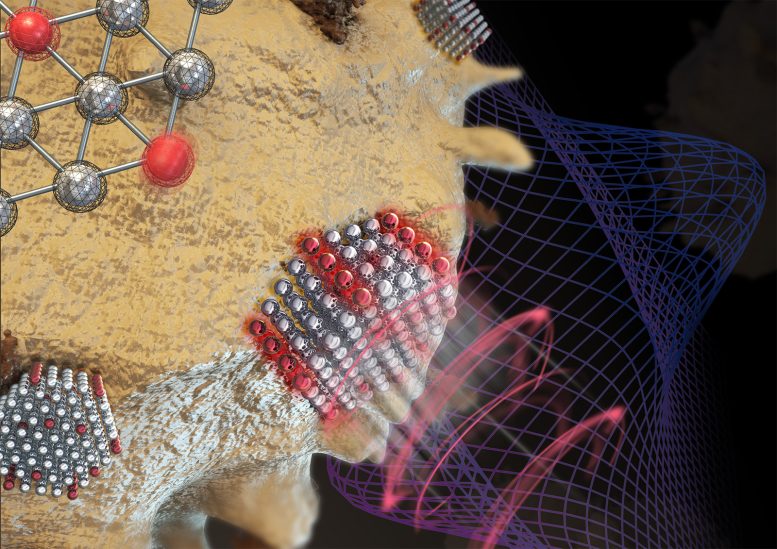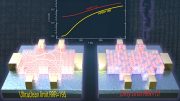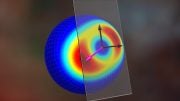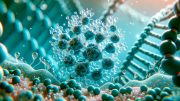
Super-resolved photonic force microscopy for detecting ultra-weak interaction forces between nanoparticles and surfaces. Credit: Lei Ding
A collaborative research team has developed a novel method to measure minuscule nanoscale forces in liquids, using a technique that significantly enhances measurement sensitivity and resolution. This breakthrough could transform biological research and advance biomedical technology.
Groundbreaking research has introduced a new method for measuring extremely small forces at the nanoscale within aqueous environments, expanding our understanding of the microscopic realm.
The significant nanotechnology advance was achieved by researchers from Beihang University in China with RMIT University and other leading institutions including the Australian National University and University of Technology Sydney.
The new technique, involving a super-resolved photonic force microscope (SRPFM), is capable of detecting forces in water as small as 108.2 attonewtons—a scale so minute that it compares to measuring the weight of a virus.
Lead researcher from Beihang University, Professor Fan Wang, said the key to this ultra-sensitive measurement lay in the use of lanthanide-doped nanoparticles, trapped by optical tweezers, which are then used to probe the minute forces at play within biological systems.
Challenges in Nanoscale Measurements
“Understanding these tiny forces is crucial for the study of biomechanical processes, which are fundamental to the workings of living cells,” he said. “Until now, measuring such small forces with high precision in a liquid environment was a significant challenge due to factors like probe heating and weak signal issues.”
The SRPFM technique developed by Wang and his team addresses these challenges by employing advanced nanotechnology and computational techniques.
By leveraging neural network-empowered super-resolution localization, the team is able to precisely measure how the nanoparticles are displaced by tiny forces within a fluid medium.
Study co-first author from RMIT University, Dr Lei Ding, said this innovation not only enhances the resolution and sensitivity of force measurements but also minimizes the energy required to trap the nanoparticles, thereby reducing potential damage to biological samples.
“Our method can detect forces down to 1.8 femtonewtons per square root of the bandwidth, which is near the theoretical limit imposed by thermal noise,” Ding said.
Implications and Applications
The implications of this research are vast, added Dr Xuchen Shan, co-first author from Beihang University
“By providing a new tool to measure biological events at the molecular level, this technique could revolutionize our understanding of a host of biological and physical phenomena,” Shan said.
This includes everything from how proteins function within human cells to new methods of detecting diseases at an early stage.
The study also explored the application of this technology in measuring electrophoresis forces acting on single nanoparticles and the interaction forces between DNA molecules and interfaces, crucial for the development of advanced biomedical engineering techniques.
The team’s findings not only pave the way for new scientific discoveries but also have potential applications in the development of new nanotechnological tools and improving the sensitivity of biomedical diagnostics.
Reference: “Sub-femtonewton force sensing in solution by super-resolved photonic force microscopy” by Xuchen Shan, Lei Ding, Dajing Wang, Shihui Wen, Jinlong Shi, Chaohao Chen, Yang Wang, Hongyan Zhu, Zhaocun Huang, Shen S. J. Wang, Xiaolan Zhong, Baolei Liu, Peter John Reece, Wei Ren, Weichang Hao, Xunyu Lu, Jie Lu, Qian Peter Su, Lingqian Chang, Lingdong Sun, Dayong Jin, Lei Jiang and Fan Wang, 14 June 2024, Nature Photonics.
DOI: 10.1038/s41566-024-01462-7









Be the first to comment on "Incredible New Technique Measures Forces As Small as a Virus With Unprecedented Precision"